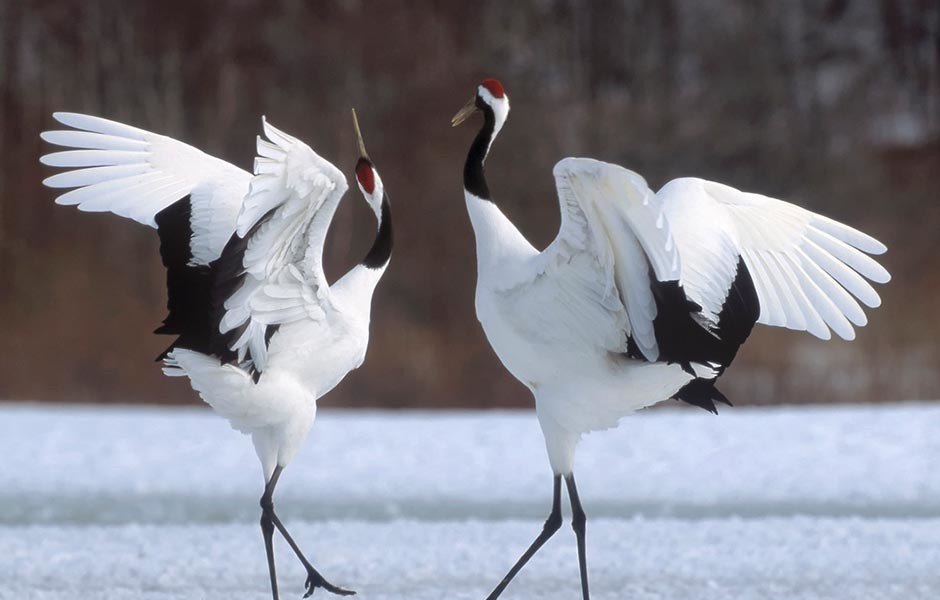d iIn the misty wetlands and tranquil marshes of East Asia, a symbol of grace and longevity reigns supreme – the Red-Crowned Crane (Grus japonensis). This magnificent bird, with its striking red crown contrasting against a backdrop of snowy white feathers, holds a special place in the hearts and cultures of many Asian countries. Revered for its elegance and revered in folklore, the Red-Crowned Crane stands as a testament to the harmony between humanity and nature. Let’s delve deeper into the world of this majestic creature.
The Anatomy and Appearance
The Red-Crowned Crane is one of the largest crane species in the world, standing at an impressive height of up to 5 feet (1.5 meters) and boasting a wingspan of over 7 feet (2.1 meters). Its distinguishing feature is, of course, the bright red patch of skin atop its head, which contrasts vividly with its snowy plumage. This striking red crown, which gives the bird its name, serves as a beacon of vitality and beauty in its natural habitat.
Habitat and Distribution
The Red-Crowned Crane primarily lives in the wetlands, marshes, and rivers of East Asia, particularly in countries such as China, Japan, Korea, and parts of Russia. These birds are highly adaptable and can thrive in various habitats, from coastal plains to inland marshes. However, due to habitat loss and human encroachment, their range has significantly diminished over the years, making conservation efforts crucial to their survival.

Behavior and Social Structure
Red-Crowned Cranes are known for their graceful and dignified demeanor, often engaging in elaborate courtship displays characterized by synchronized dances and calls. These displays not only serve as a means of attracting mates but also reinforce social bonds within crane communities. These birds are typically monogamous, forming lifelong pair bonds that endure through the changing seasons.
Diet and Feeding Habits
As omnivores, Red-Crowned Cranes have a varied diet consisting of plants, insects, small mammals, and fish. They forage in shallow water, using their long bills to probe the mud for food. During the breeding season, they often feed on grains and seeds found in agricultural fields, sometimes bringing them into conflict with farmers. However, efforts to mitigate such conflicts through conservation measures have helped foster coexistence between cranes and humans.
Cultural Significance
In many Asian cultures, the Red-Crowned Crane holds deep symbolic significance, representing longevity, fidelity, and prosperity. In Japan, it is known as the “Tancho” and is considered a national treasure, appearing in art, literature, and folklore throughout the country’s history. And in China and Korea, the crane is also revered as a symbol of good fortune and immortality, often depicted alongside deities and revered figures.
Conservation Challenges
Despite its cultural importance and symbolic value, the Red-Crowned Crane faces numerous threats to its survival, including habitat loss, pollution, illegal poaching, and collisions with power lines. Climate change further exacerbates these challenges by altering the availability of suitable breeding grounds and disrupting migration patterns. Conservation efforts, including habitat restoration, captive breeding programs, and community education initiatives, are crucial for safeguarding the future of these magnificent birds.
Conclusion
In the tapestry of East Asian landscapes, the Red-Crowned Crane stands as a beacon of beauty, resilience, and cultural heritage. Its graceful presence reminds us of the interconnectedness of all living beings and the importance of preserving our natural world for future generations. So, by embracing the spirit of conservation and coexistence, we can ensure that these majestic birds continue to soar across the skies, embodying the timeless ideals of grace and longevity.









